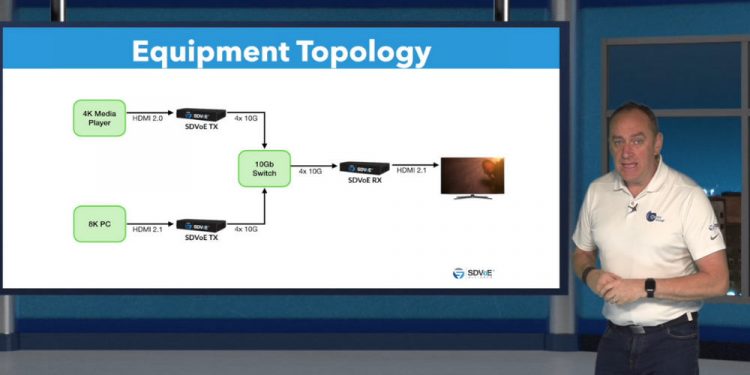The SDVoE Alliance announced the world’s first 8K AV-over-IP transport solution. Soon-to-be-released SDVoE transmitters and receivers deliver 8K video across a standard network and are entirely backward compatible with 4K SDVoE systems.
HDMI 2.1 defines many 8K formats with varying bit depth, chroma subsampling, frame rate and colour space. SDVoE 8K supports all of them without adding any compression or latency. Four independent links on an off-the-shelf 10G Ethernet switch provide 40Gb per 8K endpoint, no special or unusual switches are required.
“There are huge potential markets for 8K systems in the pro AV space starting with live events that feature massive screens and outdoor signage where we are seeing bigger and bigger canvases. People will also want to use 8K displays in corporate environments, for smaller video walls, in museums and of course medical applications – they actually have 8K endoscopes now,” said Chris Chinnock, President of Insight Media and Executive Director of the 8K Association.
“We really are the first AVoIP to do 8K at all – and the fact that it’s totally compatible with existing SDVoE systems is important,” said Justin Kennington, President of the SDVoE Alliance. “Your existing 4K 10G SDVoE transmitter can send signals to your new 8K 4x10G SDVoE receiver. The opposite is also true, assuming you’re sending 4K from the 8K transmitter (obviously you can’t send an 8K signal to a 4K RX).
What comes in, goes out without compromise – no added compression or latency.”
All AV distribution and processing applications that demand zero-latency and uncompromised video can benefit from SDVoE technology, which provides an end-to-end hardware and software platform for AV extension, switching, processing and control through advanced chipset technology, common control APIs and interoperability. SDVoE network architectures are based on off-the-shelf Ethernet switches, thus offering substantial cost savings and greater system flexibility and scalability over traditional approaches, such as point-to-point extension and circuit-based AV matrix switching.
















